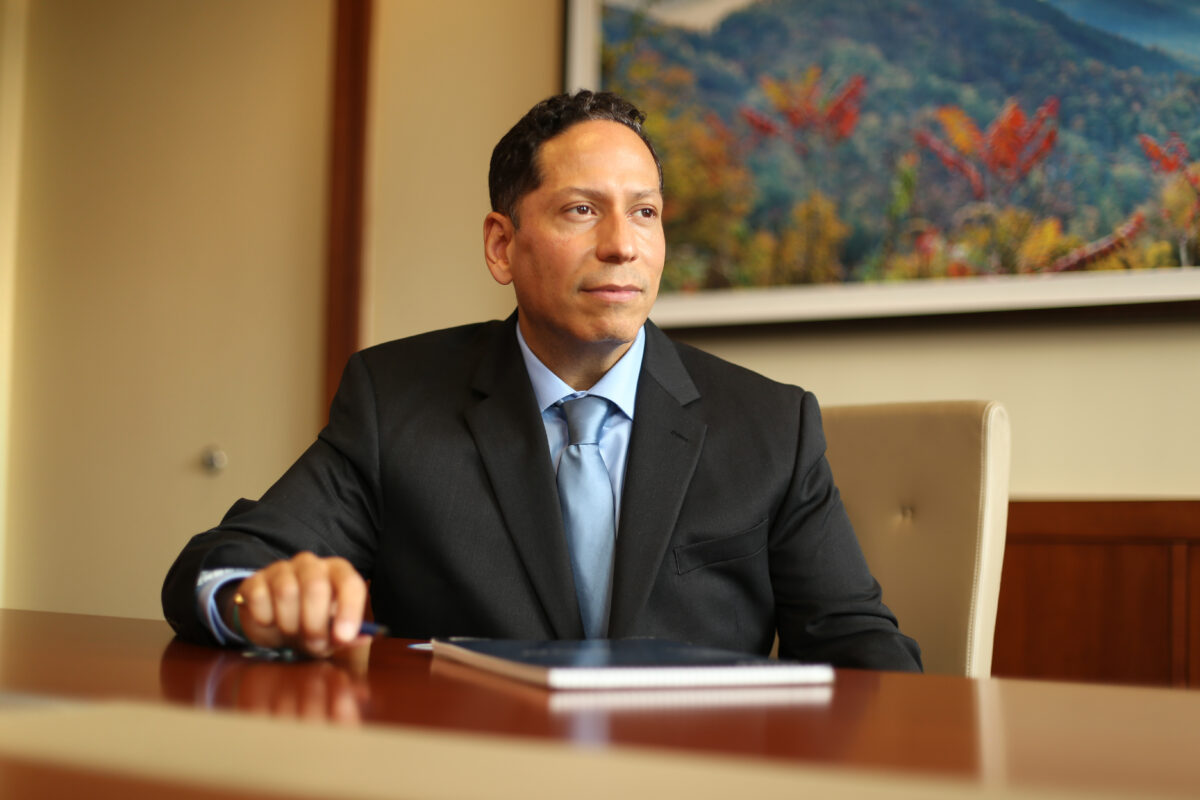Vincent Guilamo-Ramos grew up in the South Bronx of New York City, where he says his passion for health care and his drive for understanding the impact of social determinants of health was first ignited.
He saw how his community, comprised of mostly Latinos and African Americans, differed from other communities in New York City. The South Bronx, just a few miles away from Manhattan is a good example of how a person’s geographic context and the underlying social processes and institutions within a community shapes health status and outcomes. The presence or absence of accessible and high-quality healthcare, education, rates of poverty and harmful social processes such as structural racism and anti-immigrant sentiment are all exemplars of how health is shaped by determinants of health outside of the traditional clinical care provided by nurses and other healthcare professionals.
“Part of why I became a nurse practitioner is because I realized how well-positioned nurses are to look at the whole person they are caring for, not just their condition. Looking beyond a patient’s disease and seeing that they may be experiencing bias from the health system or structural racism, can help us provide them with optimal care and ensure we are part of the solution,” says Guilamo-Ramos.
On December 11, Guilamo-Ramos who has recently accepted the position of Director of the Institute for Policy Solutions at John Hopkins University in Washington D.C., will speak at the Lawrence Bloomberg Faculty of Nursing’s anticipated Verna Huffman Splane Lecture on these nurse-led strategies and their ability to pursue systems change.
He is hopeful that with greater awareness, nurse-led models of care can be used to mitigate and address the harmful social determinants of health while maintaining the nursing professions’ commitment to the provision of clinical care.
Guilamo-Ramos spoke with communications lead Rebecca Biason about the burden of social determinants of health on societies in North America, and how nurses face ongoing challenges in being able to provide optimal care.
What are some of the leading social determinants of health (SDOH) impacting the health of societies in North America?
Guilamo-Ramos: It is a complicated answer. An increase in multiple co-morbidities is leading to more chronic disease in North American populations, and typically to address these issues we focus on traditional clinical care. But that clinical care is only getting us 20 per cent of the way in keeping people healthy. The remaining percentage is tied to the variability of SDOHs, which include lack of housing, education, and access to health care. But also include other aspects that we have yet to fully address like structural racism, anti-Indigenous sentiments, and the adversity that comes from living through experiences shaped by those SDOHs.
In nursing we understand that when people experience racism, it can have a physiological impact. We have gotten better at screening for factors like a lack of proper nutrition, housing and health care, but there are additional factors that are contributing to the health status of minoritized communities in our society in a negative way.
What are the challenges preventing nurses from providing care for the whole person?
Guilamo-Ramos: Nurses really are unique in their position to address SDOH’s and see the whole person beyond their specific condition, but the challenge comes from health care more broadly and the way our delivery systems have been designed.
In the United States our health system reimburses health providers for procedures not for health. Reimbursement models are not tied to whether someone successfully managed their hypertension, they are tied to whether we performed an intervention. In essence we are incentivized to perform more procedures and nurses are a part of that approach that prioritizes sick and acute care instead of care that promotes health and prioritizes prevention.
Nurses represent the largest segment of the labour workforce, and one way to control costs is to limit the number of nurses. This results in unsafe nurse-patient staffing ratios and is associated with a range of poor outcomes including, adverse health events for patients and nurse burnout and recidivism. In these instances, it is nearly impossible for nurses to provide the quality care, the kind of care that we want to provide.
How do you see nurses leading mitigation strategies that address SDOH?
Guilamo-Ramos: I think nurses should be embracing leadership opportunities that allow them to reshape how healthcare is delivered. We need nurses not just at the bedside, but also in academic institutions, and at the centres of government advocating for health care redesign that will allow our health systems to get beyond our traditional focus on the provision of clinical care, primarily in acute care settings. Rather, nursing practice of the future builds on our dominant practice model of clinical care and integrates population and community health to how we practice. In doing so, the global nursing workforce has the potential to significantly shape planetary health.
That is part of the reason why I have made the transition to John Hopkins. There is an opportunity for me, as a nurse, as an academic leader to be a part of policy changes that provides health care solutions. I’m really committed to advocating that nurses lead the work. We need a seat at the table, and as schools of nursing, we need to be preparing future nurses to care for patients holistically and with clarity on their potential and responsibility to lead in devising health solutions to our respective countries’ systems of care.
Register for the Verna Huffman Splane Lecture to hear more about Dr. Guilamo-Ramos’ thoughts on nurse-led models of care.
